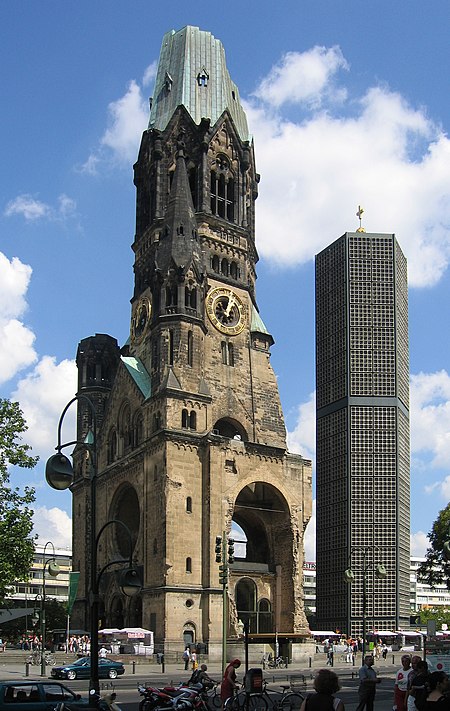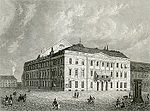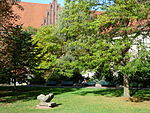Battle of Berlin (RAF campaign)

The Battle of Berlin (November 1943 to March 1944) was a bombing campaign against Berlin by RAF Bomber Command along with raids on other German cities to keep German defences dispersed. Air Chief Marshal Sir Arthur Harris, Air Officer Commanding-in-Chief (AOC-in-C) Bomber Command, believed that "We can wreck Berlin from end to end if the USAAF come in with us. It will cost us between 400 and 500 aircraft. It will cost Germany the war".Harris could expect about 800 serviceable heavy bombers for each raid, equipped with new and sophisticated navigational devices such as H2S radar. The USAAF, having recently lost many aircraft in attacks on Schweinfurt, did not participate. The Main Force of Bomber Command attacked Berlin sixteen times but failed in its object of inflicting a decisive defeat on Germany. The Royal Air Force lost more than 7,000 aircrew and 1,047 bombers, (5.1 per cent of the sorties flown); a further 1,682 aircraft were damaged or written off. On 30 March 1944, Bomber Command attacked Nuremberg with 795 aircraft, 94 of which were shot down and 71 were damaged. The Luftwaffe I. Jagdkorps recorded the loss of 256 night fighters from November 1943 to March 1944.The Luftwaffe retaliated with Unternehmen Steinbock (Operation Capricorn) against London and other British cities from January to May 1944. The Luftwaffe managed to assemble a force of 524 bombers but Steinbock caused little damage for the loss of 329 aircraft, a greater percentage loss per raid and overall than that suffered by Bomber Command over Germany.There were many other air raids on Berlin by the RAF, the USAAF Eighth Air Force and Soviet bombers. The RAF was granted a battle honour for the bombardment of Berlin by aircraft of Bomber Command from 1940 to 1945.
Excerpt from the Wikipedia article Battle of Berlin (RAF campaign) (License: CC BY-SA 3.0, Authors, Images).Battle of Berlin (RAF campaign)
Dircksenstraße, Berlin Mitte
Geographical coordinates (GPS) Address Website Nearby Places Show on map
Geographical coordinates (GPS)
| Latitude | Longitude |
|---|---|
| N 52.516666666667 ° | E 13.416666666667 ° |
Address
VoltAir
Dircksenstraße
Berlin, Mitte
Germany
Open on Google Maps










